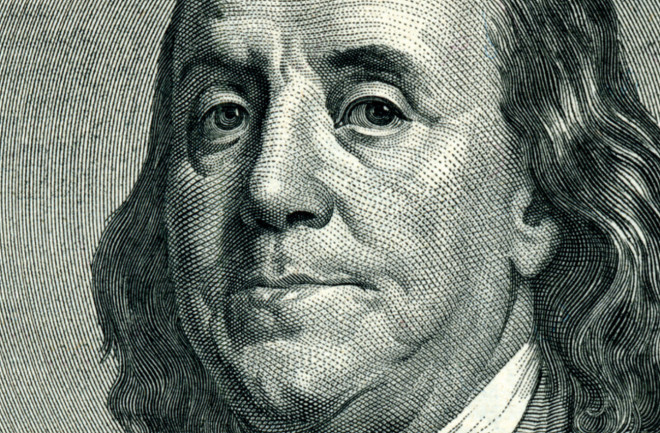For more than two centuries, hundreds of human bones have rested (in peace) under the London home of Benjamin Franklin — one of the founding fathers of the U.S. But the secret of these bones isn’t quite as horrific as you might suspect.
As it turns out, the son-in-law of Franklin’s landlady taught anatomy privately in the house, at a time when the new field of science was just taking off in England. But that doesn’t mean the bones were completely innocent: The practice of dissection wasn’t strictly legal back then.
Read More: Ben Franklin: Founding Father, Citizen Scientist
Grim Discovery of the Ben Franklin Bodies
The bones were first discovered in the late 1990s, while the Craven Street home underwent conservation repairs. The museum staff called a coroner, says Marcia Balisciano, the director of the Benjamin Franklin House, a museum at the former residence of Franklin in the heart of London, but the latter quickly the determined the bones were more than a century old.
It wasn’t entirely surprising. “If you keep digging down in London, you can find anything — Roman remains, Viking remains or anything,” she says.
Researchers then excavated a small pit in what is now called the seminary room; back in Franklin’s day, however, it was simply a small space at the back of the house. The pit, one meter wide and one meter deep, revealed more than 1,200 bone fragments belonging to at least 15 individuals.
But because this is merely a small part of the space that would have been in the so-called garden at the back of the house, there are likely many more bones that remain unexcavated.
Benjamin Franklin House in London
Franklin had been to England before, to train as a printer decades earlier. But when he moved to London in 1757, he had already retired from printing. Instead, he arrived as agent of the family of William Penn.
“When he came back [to London], his fortunes were very different,” says Balisciano. “He was one of the most famous colonialists of his day.”
From 1757 to 1775, Franklin was a boarder in the house. He became quite close to Polly, the daughter of his landlady, Margaret Stevenson. According to Balisciano, Franklin wrote “charming letters” to her whenever one of the two were traveling.
Polly married William Hewson — an anatomist famous for his discoveries in blood coagulation — in 1770. He’d studied under William Hunter, a famous obstetrician who also lectured on anatomy. The two had worked together, up until they had a dispute over scientific discoveries.
It was with Franklin’s help that Hewson was ultimately elected into the Royal Society — the U.K.’s national science academy. “[Franklin] thought [Hewson] was a polite and promising young man,” Balisciano says.
Franklin also intervened in the scientific spat between the two scientific phenoms, she continues: “He tried to mediate this dispute between Hewson and William Hunter to get some of his preparations and samples back into his possession.”
Was Ben Franklin a Serial Killer?
Dissection wasn’t fully legal until the 19th century, Balisciano explains. The discipline was growing, but not enough people were teaching the topic.
Therefore, after Hewson married Polly, Franklin encouraged him to set up a private academy at Craven Street. The bones found at the house in the late 1990s are likely the very same ones used for educational purposes at this academy.
Many of the bones had distinctive cut marks on them. Femurs were cut in a specific way, likely as an aid to teach students about amputation. “This is a good skill if you were a surgeon, to know how to do these things,” Balisciano says.
Likewise, some of the skulls had cuts that were likely made from a trepanning device — a tool that was used to make circular holes in the skull. This practice was believed, at the time, to relieve pressure on the brain. The markings on the skeletons show he was studying anatomy, not that he was a serial killer.
The Benjamin Franklin Bodies Were Illegal
Balisciano says that marks like this support the idea that these bones were likely from cadavers used at the anatomy school. Since the practice of dissection was still legally murky at the time, the bodies may have been acquired through dubious means, she adds.
The term “resurrectionists” was a euphemism used at the time for grave diggers who could retrieve bodies. Or, anatomists might have made arrangements with a hangman, she speculates. In any case, it’s not completely clear where these specific human remains would have come from.
Regardless of the dubious origins of the bones, Balisciano says she believes that Franklin was thrilled about the underlying motive.
“[Franklin] was a champion of science — he was supportive of young researchers and others that could exemplify his passion for knowledge and innovation,” she says. “He probably loved the idea that this scientific work would be going on.”
Read More: Cities Built on Secret Cemeteries
